小学英语节日PPT讲课稿
- 格式:ppt
- 大小:3.43 MB
- 文档页数:45
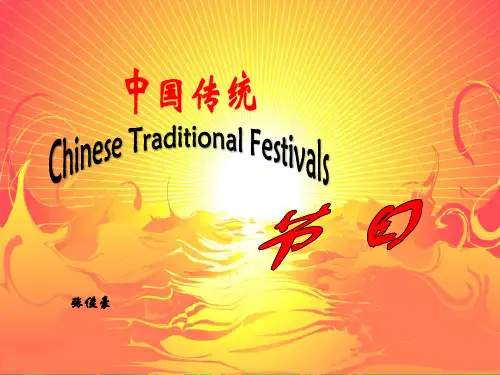
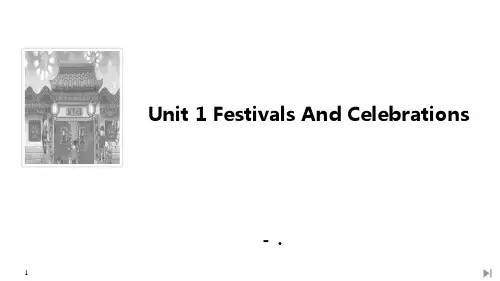
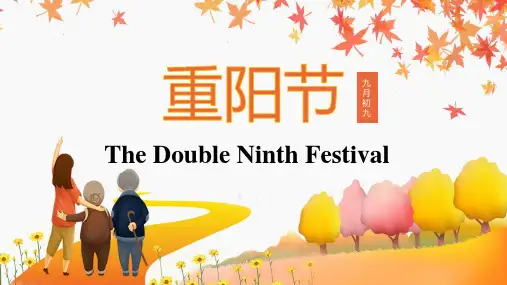

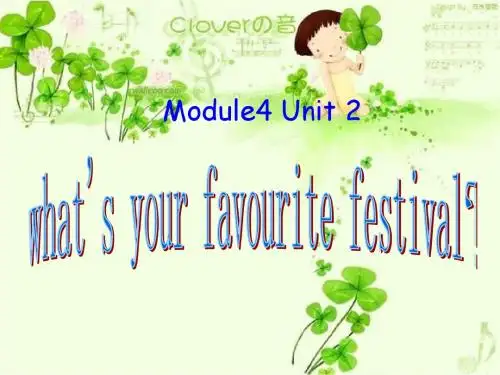
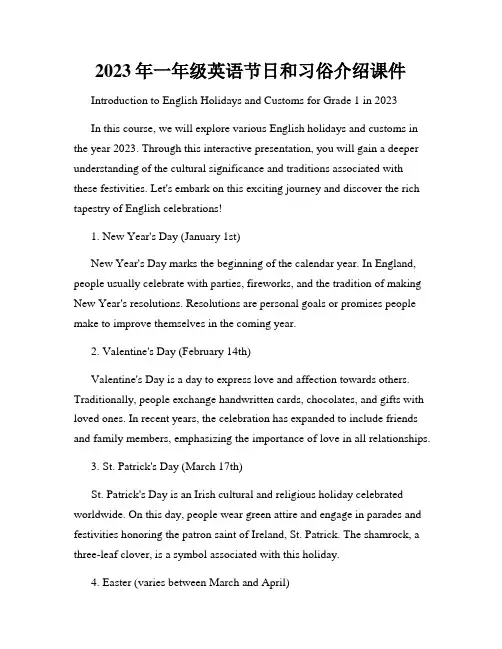
2023年一年级英语节日和习俗介绍课件Introduction to English Holidays and Customs for Grade 1 in 2023In this course, we will explore various English holidays and customs in the year 2023. Through this interactive presentation, you will gain a deeper understanding of the cultural significance and traditions associated with these festivities. Let's embark on this exciting journey and discover the rich tapestry of English celebrations!1. New Year's Day (January 1st)New Year's Day marks the beginning of the calendar year. In England, people usually celebrate with parties, fireworks, and the tradition of making New Year's resolutions. Resolutions are personal goals or promises people make to improve themselves in the coming year.2. Valentine's Day (February 14th)Valentine's Day is a day to express love and affection towards others. Traditionally, people exchange handwritten cards, chocolates, and gifts with loved ones. In recent years, the celebration has expanded to include friends and family members, emphasizing the importance of love in all relationships.3. St. Patrick's Day (March 17th)St. Patrick's Day is an Irish cultural and religious holiday celebrated worldwide. On this day, people wear green attire and engage in parades and festivities honoring the patron saint of Ireland, St. Patrick. The shamrock, a three-leaf clover, is a symbol associated with this holiday.4. Easter (varies between March and April)Easter is a Christian holiday commemorating the resurrection of Jesus Christ. The celebrations often include attending church services, participating in Easter egg hunts, and exchanging chocolate eggs. The Easter Bunny is a beloved character associated with this holiday, bringing gifts and hiding eggs for children.5. May Day (May 1st)May Day, or International Workers' Day, is a celebration of laborers and workers' rights. While less prominent in England, May Day is still observed in certain communities with parades, dances, and festivals. The Maypole dance, where participants weave ribbons around a tall pole, is a traditional custom associated with this day.6. Halloween (October 31st)Halloween is a popular holiday that originated from Celtic traditions and is celebrated in many English-speaking countries. Children dress up in costumes, go trick-or-treating, and carve pumpkins into Jack-o'-lanterns. It is believed that Halloween allows the boundary between the living and the dead to weaken, allowing spirits to roam freely.7. Christmas (December 25th)Christmas is one of the most widely celebrated holidays in England. It commemorates the birth of Jesus Christ and is a time for family gatherings, exchanging gifts, and feasting. Decorations such as Christmas trees, wreaths, and lights adorn homes and streets, creating a festive atmosphere.8. Boxing Day (December 26th)Boxing Day is a public holiday observed in the United Kingdom, Canada, and other Commonwealth countries. It traditionally served as a day for people to give gifts to those in need, such as the less fortunate or servants. In modern times, it has become a day for shopping, sports events, and spending time with family and friends.ConclusionThrough this course, we have explored a variety of English holidays and customs in the year 2023. Each celebration carries its own unique traditions and cultural significance. By understanding and appreciating these festivities, we can broaden our horizons and embrace the diversity of global cultures. May these insights enrich your understanding of English customs and inspire you to explore further aspects of the language and its associated traditions.。
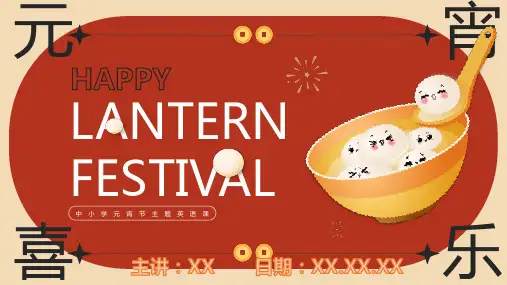

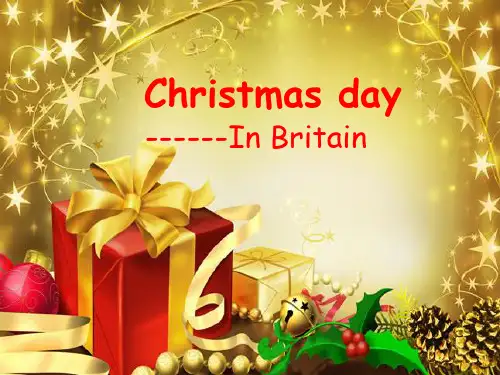

小学节日英语作文课件Title: Elementary School Festival English Essay PPTIntroduction:Hello everyone, today we are going to talk about festivals in our elementary school. Festivals are special occasions that bring people together to celebrate and have fun. In this presentation, we will explore some of the festivals we celebrate in our school and how we make them special.Slide 1: Introduction- Definition of festivals- Importance of festivals in our lives- Overview of the festivals we will discussSlide 2: Halloween- Date: October 31st- Activities: costume parade, pumpkin carving,trick-or-treating- Why we celebrate: to have fun and dress up in spooky costumesSlide 3: Thanksgiving- Date: fourth Thursday of November- Activities: turkey dinner, gratitude jar, Thanksgiving play- Why we celebrate: to give thanks for our blessings and enjoy a meal with loved onesSlide 4: Christmas- Date: December 25th- Activities: Christmas tree decorating, gift exchange, Christmas caroling- Why we celebrate: to celebrate the birth of Jesus Christ and spread joy and goodwillSlide 5: Lunar New Year- Date: varies (based on the lunar calendar)- Activities: lion dance, red envelope giving, traditional Chinese food- Why we celebrate: to welcome a new year and wish for prosperity and good luckSlide 6: School Carnival- Date: end of the school year- Activities: games, face painting, bouncy castles- Why we celebrate: to have fun and raise funds for the schoolSlide 7: Conclusion- Festivals are important for bringing people together and celebrating traditions- They create a sense of community and joy- Let’s continue to enjoy and appreciate the festivals in our elementary schoolThank you for listening. Let’s make every festival a memorable and enjoyable experience for everyone.。
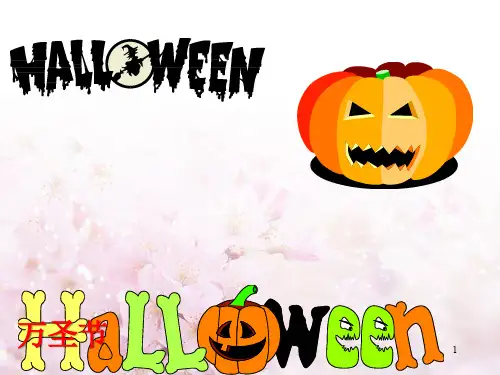
三年级英语节假日习俗课件Introduction:Hello, everyone! Today, we are going to explore the exciting world of holiday traditions in English-speaking countries. We will discover the customs and celebrations that make these holidays special. Get ready for a fun and educational journey!I. Christmas in the United States (Slide 1)- Christmas is one of the most important holidays in the United States.- People decorate Christmas trees with lights and ornaments.- Santa Claus delivers gifts to children on Christmas Eve.- Families gather together, exchange presents, and enjoy a festive meal.II. Halloween in Canada (Slide 2)- Halloween is widely celebrated in Canada on October 31st.- Children dress up in costumes and go trick-or-treating, asking for candy.- Jack-o'-lanterns are carved out of pumpkins.- Haunted houses and parties are organized to embrace the spooky spirit.III. Easter in the United Kingdom (Slide 3)- Easter is a religious holiday celebrated in the United Kingdom.- People exchange chocolate eggs and participate in egg hunts.- Traditional Easter foods include hot cross buns and roast lamb.- The holiday symbolizes the resurrection of Jesus Christ.IV. Thanksgiving in the United States (Slide 4)- Thanksgiving is a time to express gratitude and appreciation.- Families gather for a large meal, featuring turkey, stuffing, and pumpkin pie.- People share what they are thankful for.- The Macy's Thanksgiving Day Parade in New York City is a popular event.V. Chinese New Year in Australia (Slide 5)- Chinese New Year is celebrated by the Chinese community in Australia.- Festivities include dragon and lion dances, firecrackers, and red decorations.- Families come together for reunion dinners.- The celebration typically lasts for 15 days, with each year represented by an animal from the Chinese zodiac.VI. Conclusion:In conclusion, learning about different holiday traditions exposes us to diverse cultures and fosters understanding among people worldwide. By celebrating various holidays, we not only enjoy the festivities but alsoappreciate the values and customs of others. Remember to embrace and respect the uniqueness of these traditions. Happy holidays to all!*Note: This article is formatted as a lesson presentation, providing information through slides rather than a standard essay format. Each slide can incorporate relevant images and bullet points to enhance the visual experience for the students.。
2023年小学英语《节日与习俗》课件课件内容概述:本次课件将介绍一些常见的节日和相应的习俗。
通过学习这些内容,学生们将能够了解不同文化中的节日和习俗,增进跨文化的交流和理解。
一、节日介绍1. 新年(New Year's Day)- 时间:一年的第一天,即1月1日- 习俗:跨年晚会、倒计时、烟花表演等2. 劳动节(Labor Day)- 时间:5月1日- 习俗:放假、家庭聚会、户外活动等3. 感恩节(Thanksgiving)- 时间:每年的第四个星期四,即11月的第四个星期四- 习俗:家人聚餐、感恩祷告、分享食物等二、中国传统节日1. 春节- 时间:农历正月初一,即中国农历的新年- 习俗:拜年、放鞭炮、舞龙舞狮、赏花灯等 2. 中秋节- 时间:农历八月十五- 习俗:赏月、吃月饼、举行家庭聚会等3. 端午节- 时间:农历五月初五- 习俗:吃粽子、赛龙舟、挂艾草等三、国际节日1. 圣诞节(Christmas)- 时间:12月25日- 习俗:装饰圣诞树、交换礼物、举办音乐会等 2. 情人节(Valentine's Day)- 时间:2月14日- 习俗:送花、送巧克力、写情书等3. 愚人节(April Fools' Day)- 时间:4月1日- 习俗:开玩笑、恶作剧、打趣等总结:通过学习不同的节日和习俗,我们能够了解不同国家和地区的文化特色,增进我们的跨文化交流和理解。
同时,也可以更好地传承和发扬自己国家的优秀传统文化。
希望同学们能够在日常生活中尊重并参与到各种节日和习俗中,体验不同文化给我们带来的乐趣和启示。
课件结束,谢谢大家的聆听!。